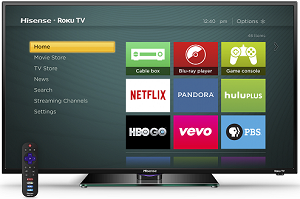Media
8.4 Million US Households Subscribe to Broadband Video, Shun Pay TV
Published:
Last Updated:

The total includes consumers who have cancelled pay-TV subscriptions and those who have never had a subscription. According to research firm Parks Associates, the 7% rate in the United States is close to an average rate of around 4% in other developed countries.
To try to stop the bleeding, pay-TV operators have begun offering their own OTT products. Satellite operator Dish Network Corp. (NASDAQ: DISH) introduced a $20 a month Sling TV product, and cable giant Comcast Corp. (NASDAQ: CMCSA) also offers a low-priced OTT package. Even telecom giant Verizon Communications Inc. (NYSE: VZ) tried to jump into the OTT market with its light-weight channel bundles and got a lawsuit from Walt Disney Co.’s (NYSE: DIS) ESPN network for its trouble.
ALSO READ: ‘Jurassic World’ Primed for $125 Million Opening Weekend
Parks Associates director of research Brett Sappington said:
While operator attempts at TV Everywhere have made little impact, OTT video services are experiencing a boom. A variety of new players are entering the market, and operators … are responding with OTT video services of their own. How the industry responds to this change will ultimately affect the fundamental structure of the video industry for years to come. … Avid video consumers are still taking pay-TV services if they can afford them. However, companies in the video ecosystem are eager to reach those consumers who are currently falling through the pay-TV cracks.
A solid winner so far is Netflix Inc. (NASDAQ: NFLX). Another media research firm recently reported new data on Internet-connected TV sets. According to Leichtman Research Group, some 56% of all U.S. households have at least one Internet-connected TV in the house. Nearly 30% have more than one connected TV. Leichtman also noted other findings:
Cable TV operators are signing up more broadband subscribers while continuing to lose pay-TV subscribers. Comcast added more than 400,000 broadband subscribers in the first quarter of this year while losing 8,000 video subscribers. As we have pointed out before, the surge in broadband subscribers and the loss of video subscribers combine to indicate the direction consumers want to go — and it is not toward cable packages of 200+ channels, of which consumers typically watch just 17.
ALSO READ: UBS Sees Big Upside to 4 Media and Entertainment Stocks
Want retirement to come a few years earlier than you’d planned? Or are you ready to retire now, but want an extra set of eyes on your finances?
Now you can speak with up to 3 financial experts in your area for FREE. By simply clicking here you can begin to match with financial professionals who can help you build your plan to retire early. And the best part? The first conversation with them is free.
Click here to match with up to 3 financial pros who would be excited to help you make financial decisions.
Thank you for reading! Have some feedback for us?
Contact the 24/7 Wall St. editorial team.